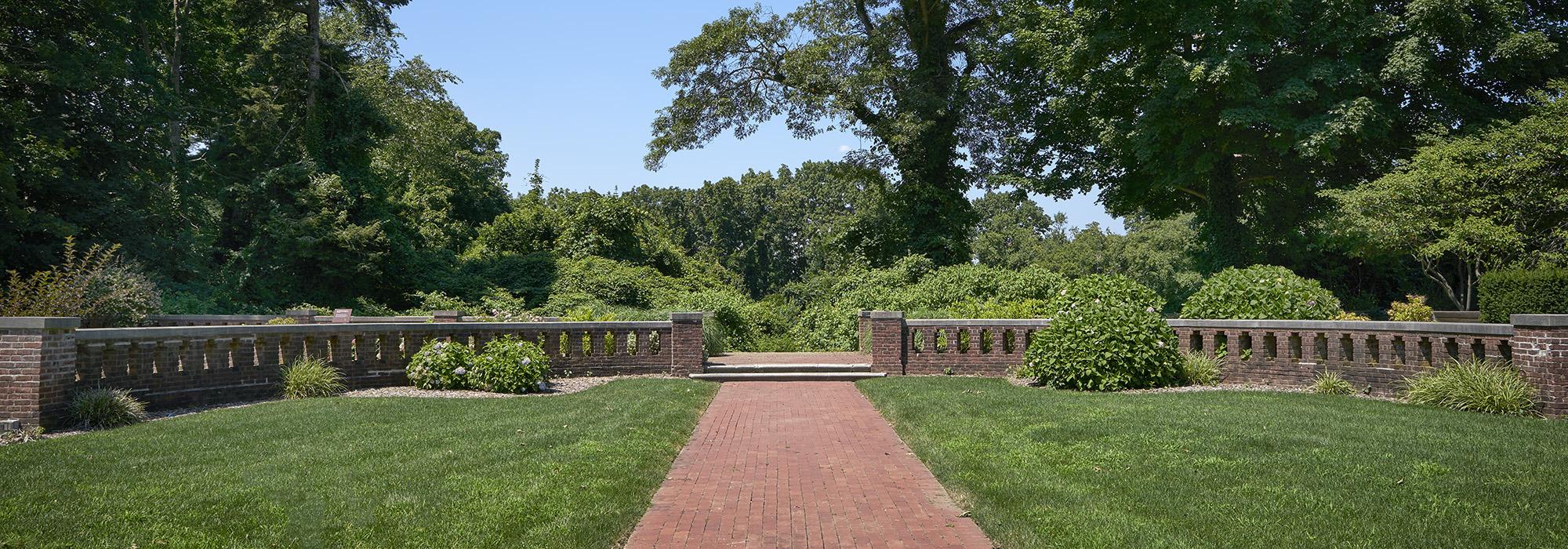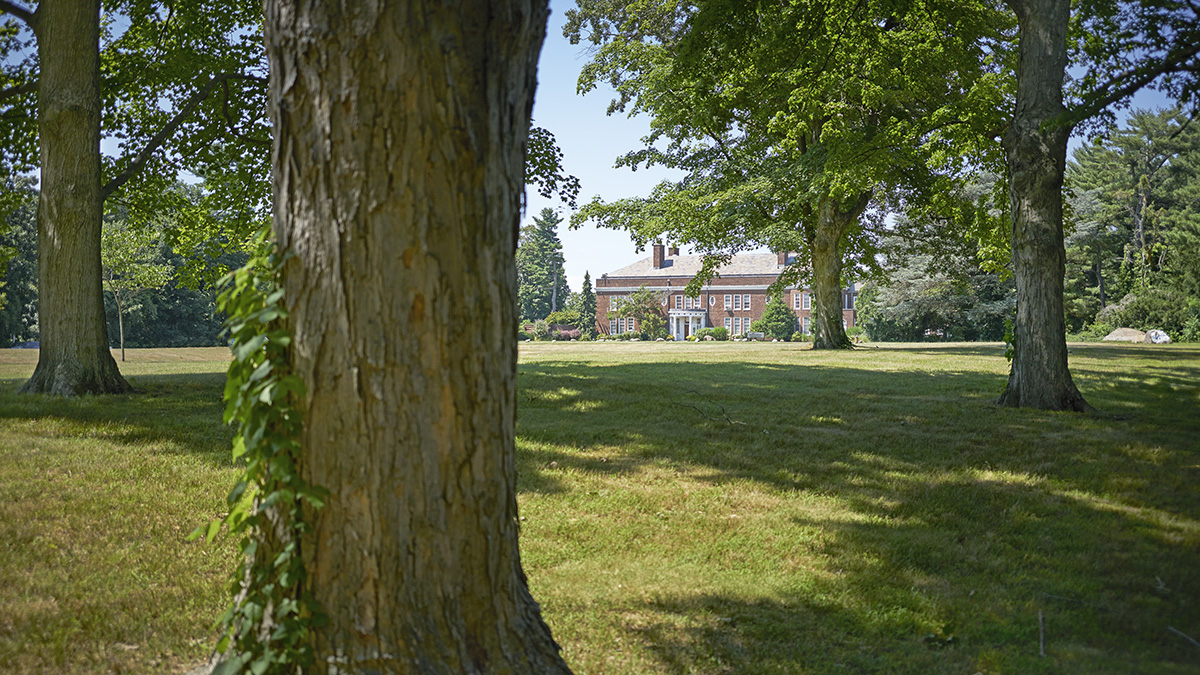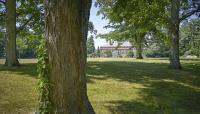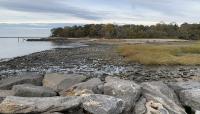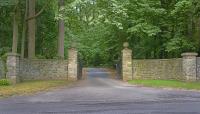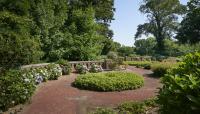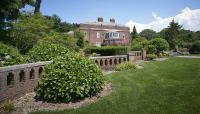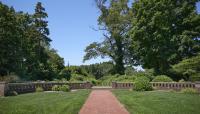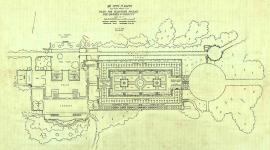Landscape Information
Beginning in the 1880s, entrepreneur and philanthropist Charles Pratt acquired nearly 1,100 acres of historically significant land in the area of Glen Cove, known as “Dosoris.” As they married, Pratt gifted each of his six sons and daughters portions of the coastal property to build summer residences. The land was all held in common with various shared enterprises managed from an area known as “The Oval,” where a collection of garages, stables, offices, and servants’ quarters were erratically placed around an oblong track. Following Pratt’s death in 1891, a mausoleum, designed by William Tubby, and a cemetery were constructed.
By circa 1905, the Pratt progeny had built shingle or clapboard homes by various architects, some with settings by James Greenleaf, clustered near the shore.
The Olmsted firm was hired in two phases, the first from 1906-09 with sporadic consultations until World War I. Their earliest task was to provide grading and coherent connections among the buildings of the Oval, of which all but the clock tower are no longer extant. The Olmsteds designed garden rooms for two of the Pratt sons’ homes (Poplar Hill, now Glengariff Rehabilitation and Healthcare Center; and Killenworth I); the early wooden buildings and grounds of both were demolished, later rebuilt in brick with new surroundings, by Charles Platt for Poplar Hill and by Trowbridge & Ackerman for Killenworth II (now a retreat for Russian diplomats).
At Welwyn, Harold and Harriet Pratt only partially renovated their original 1902 mansion for which Olmsted Brothers had planned the approach drives and service courts, and produced extensive plantings lists. Many of the specialized garden rooms once gracing this property (the rose, iris, peony, lilac and sunken gardens) were likely designed by Greenleaf or Martha Hutcheson, with some possible Olmsted involvement. Welwyn and its grounds were bequeathed to Nassau County in 1969. The mansion and immediate surrounds became home for the Holocaust Memorial and Tolerance Center in 1992, while 204 acres are a preserve of wooded trails leading to the Long Island Sound shore.
The most important undertaking by the Olmsted Brothers firm here was Frederick Law Olmsted, Jr.’s, 1908 analysis of the Pratt holdings, advising on suitable boundaries in dividing the common land. When the firm returned in 1934, at the request of Mrs. Harold Pratt, Carl Rust Parker planned a subdivision of two- to four-acre plots for family property around the Oval; he also supervised reshaping and replanting of the Pratt Family Cemetery. The Olmsted restructuring is visible today, with smaller lots and more subsidiary roads, though many original plantings have since been eradicated.



